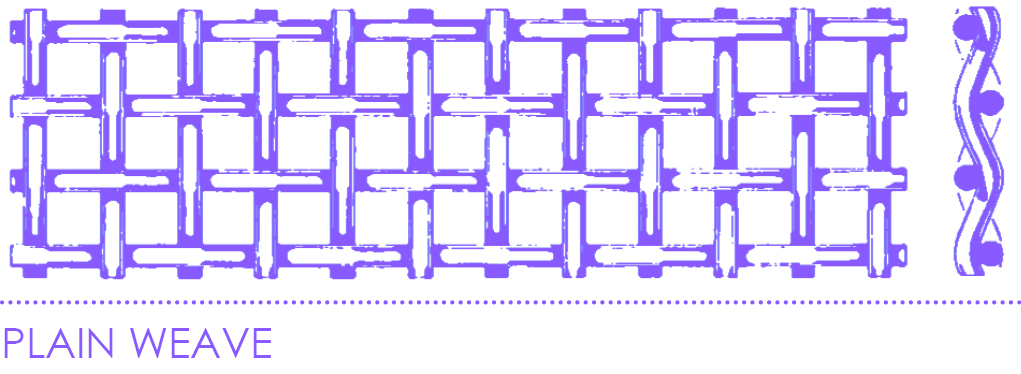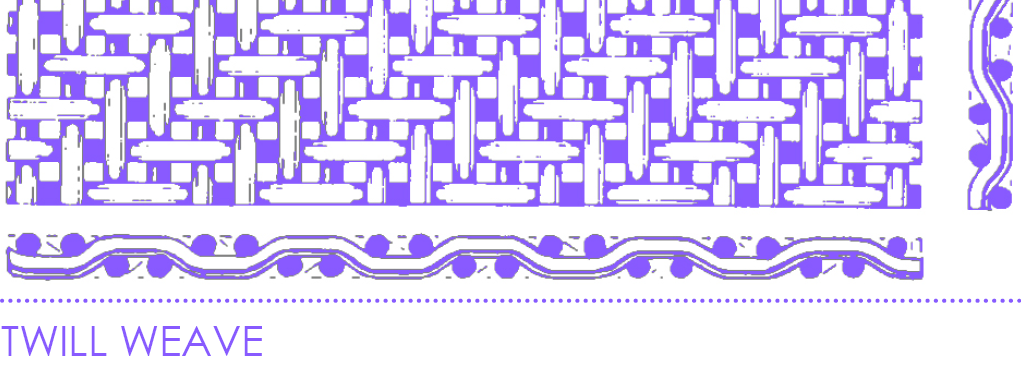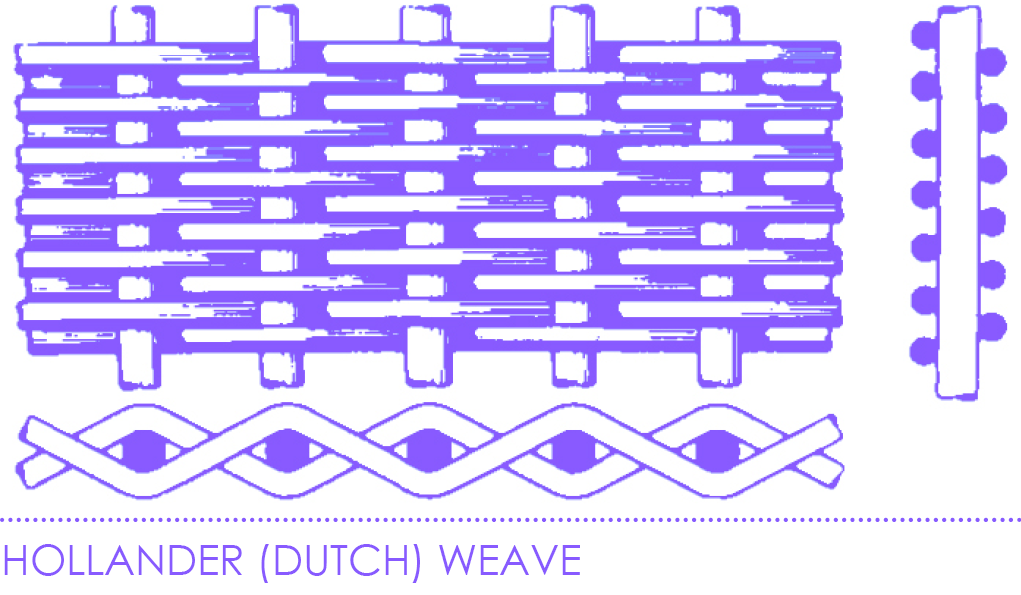
A Technical Guide to Woven Mesh Screens
The most popular screen is the simple square weave. This type of weave has the same number of wires in each direction.
A plain weave is woven from wires of the same diameter for both warp and weft, which are then arranged in a symmetrical 'over one and under one' pattern to provide square openings of precise dimensions. The benefit of this type of mesh is that it has great dimensional stability.

A twill weave is woven so that the individual wires in one direction, pass over two and under the next two cross wires. This type of weave is less rigid than a plain weave, but is often used in very fine meshes.

For even finer filtration requirements, we recommend a hollander weave, also known as a dutch weave. This type of weave has thicker, more widely spread wires horizontally than it does vertically. It resembles a 'basket' and does not have square apperatures. It is specified by two numbers that define the amount of wires per inch.
A hollander weave allows you to achieve a finer filtration, without having to use a screen pack filled with multiple thin screens. Dimensionally, it is very stable with high bursting strength.

The number of wires per inch can vary from 20 to 150 or more:
- 20 mesh is coarse
- 40-60 is intermediate
- 80-150 is fine
The thinner the wires, the more likely the mesh is to break or filter less finely. But everyone’s mesh requirements are different depending on the function they are required for.
It’s also important to know that you may have two screens of the same mesh, but they can be completely different. For example, two 20 mesh screens may appear the same, when in fact one may have a 24-gauge wire of 0.020 in diameter and an opening of 0.010 in diameter and the second could be a 30-gauge wire with a 0.010.
For more information on what screen would work best for you, get in touch with one of our technical advisers by clicking here.

